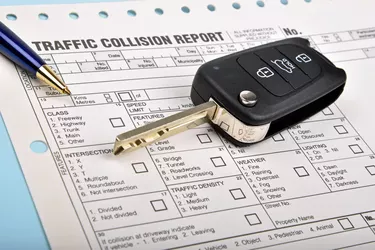
When it comes to purchasing auto insurance, you can choose between several different types of coverage. While some drivers opt to get the minimum liability coverage required, others add comprehensive coverage to their policies or get a full coverage auto insurance policy. Understanding the difference between comprehensive car insurance and full coverage insurance can help you choose the best policy for your needs and avoid unexpected surprises should you ever need to make a claim.
Comprehensive Insurance Coverage
Video of the Day
When you buy an auto insurance policy, you are given the opportunity to purchase comprehensive coverage. This is a type of coverage that provides protection against some things that you may not think of when you own a car. This type of coverage provides benefits for anything that is not directly related to an auto crash, but may still be costly to repair out of pocket. For example, if a tree limb falls on your windshield and breaks it, your comprehensive coverage will kick in and help you pay for the damage.
Video of the Day
Full Coverage Auto Insurance
When you are shopping around for auto insurance, you may notice that you will not find a policy that is specifically called full coverage auto insurance. While no policies are actually considered to be full coverage, this designation typically means that a policy includes liability coverage, comprehensive coverage and collision. With this type of policy, you protect yourself against these three major sources of loss that you could experience when driving a car. The liability component is very important so that you can limit your personal liability if you are at fault should you find yourself involved in an auto accident.
Other Types of Coverages
When you buy a full coverage auto insurance policy, you may also elect to add other optional coverages into your policy. For instance, you could buy a rider that reimburses you for the cost of any rental cars that you have to pay for after you are in a wreck. Some full coverage auto insurance policies also allow you to buy roadside assistance protection. This way, if your car breaks down on the side of the road, you can receive the help you need to get back on the road.
Another popular type of coverage you can get is underinsured or uninsured motorist coverage. In the event you're in an accident with an under or uninsured driver, then you can make a claim for medical bills or vehicle repairs.
What Comprehensive Covers
Comprehensive auto insurance can provide you with coverage in a number of different circumstances. For example, if your car is damaged in a fire, this insurance helps pay to replace the car or repair it if it is not deemed a total loss. If your car is damaged by someone in an act of vandalism, you can expect your comprehensive auto insurance policy to pay you a benefit. If your car is stolen or if something inside the car is stolen, this is the policy that you would want in order to make sure you're reimbursed and receive money to replace it.